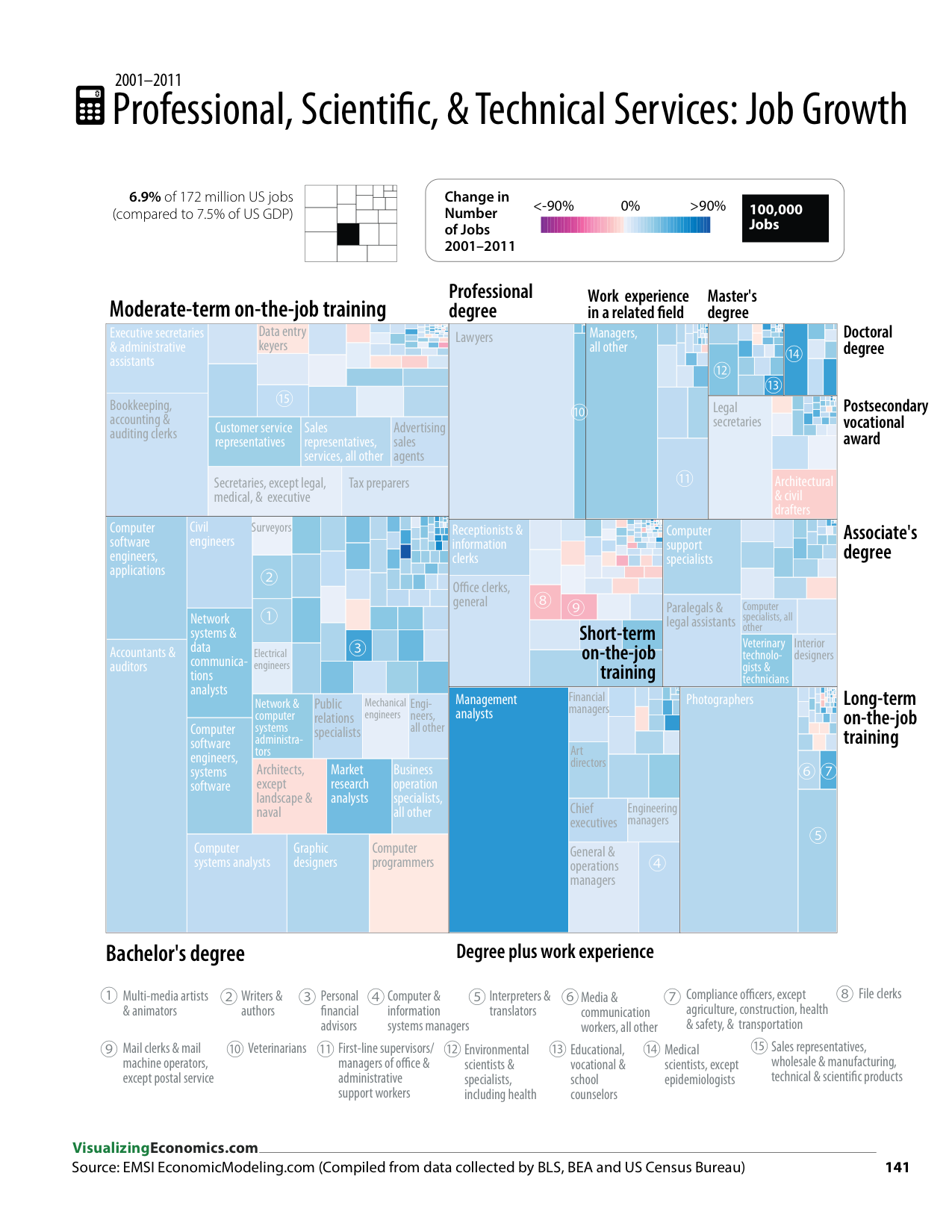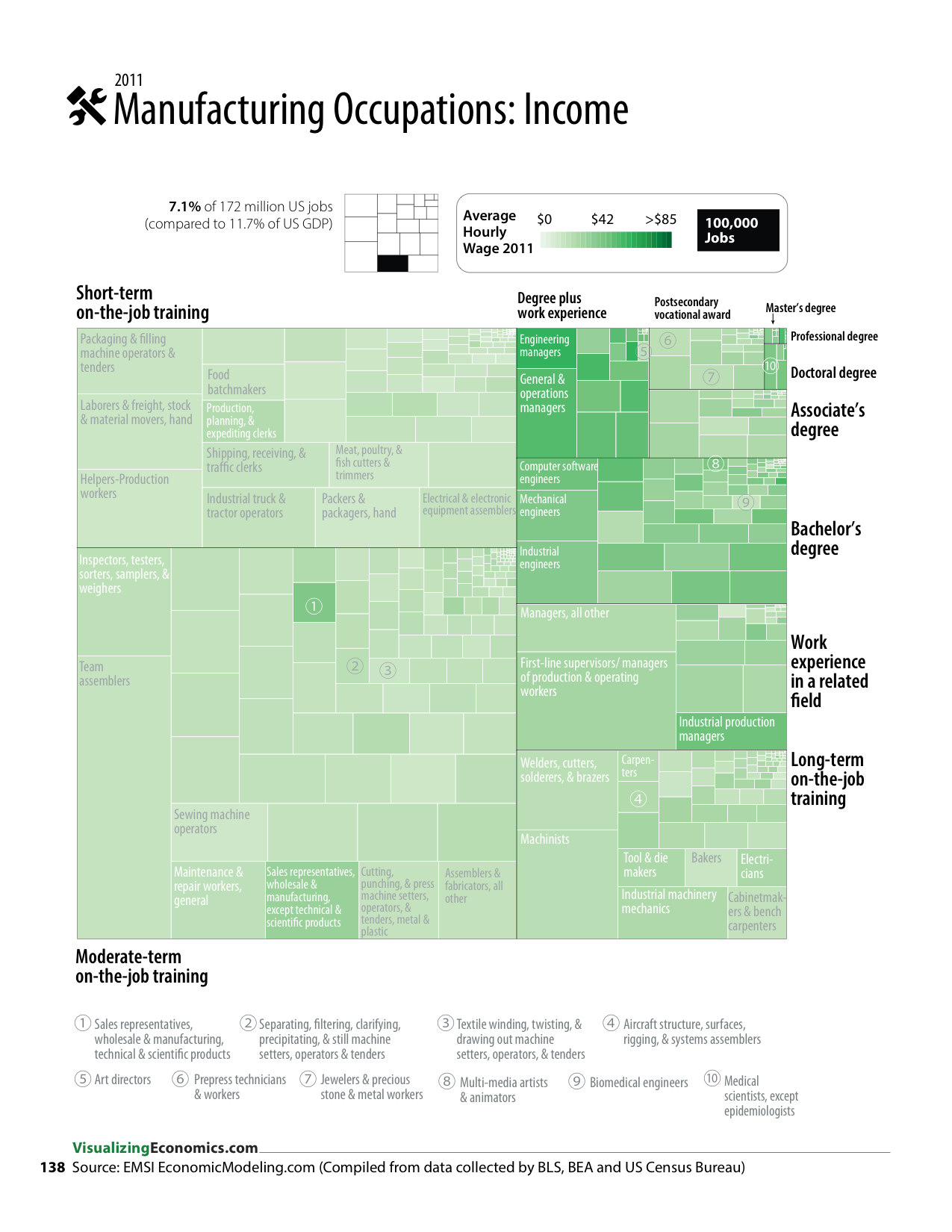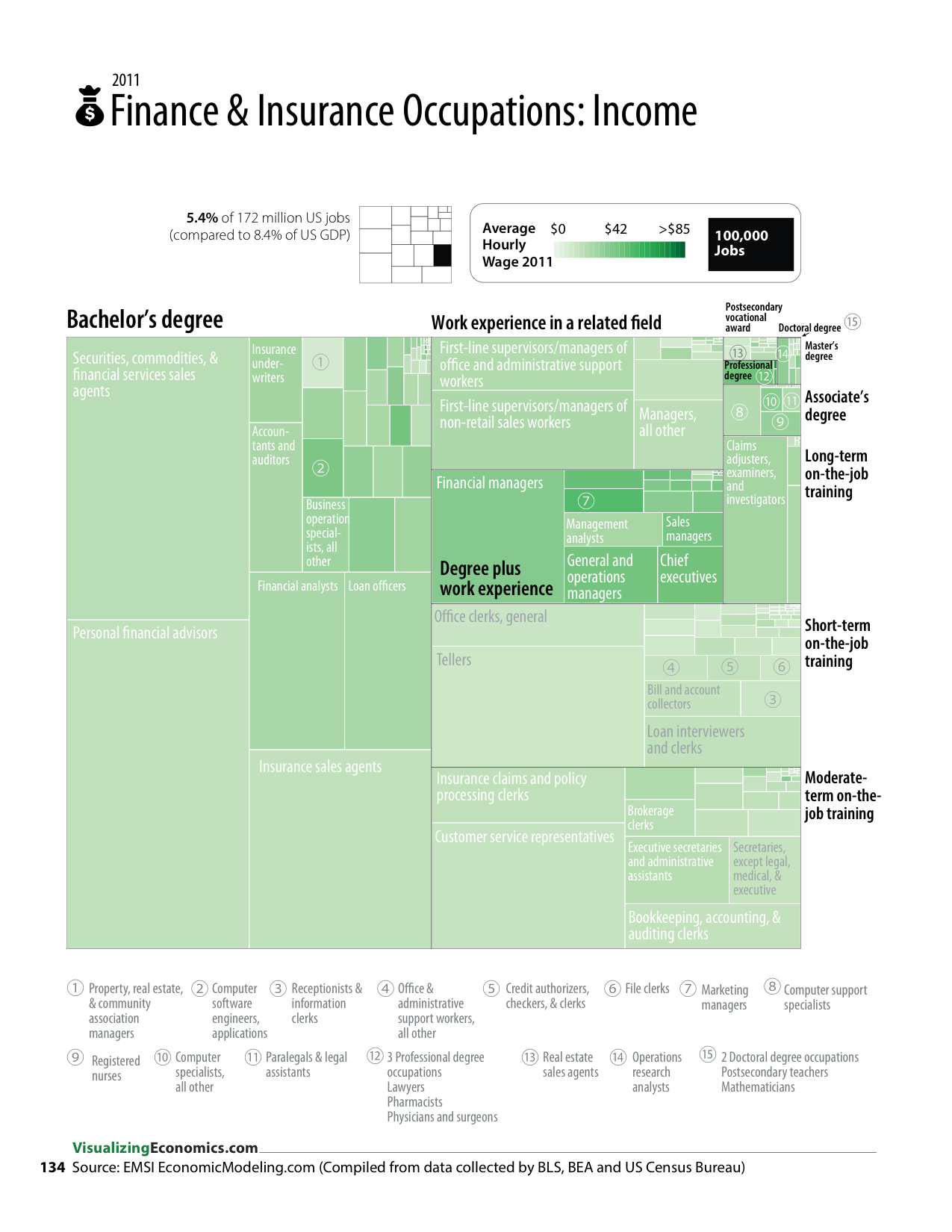






From An Illustrated Guide to Income in the United States.
For each industry, I plotted the 10-year growth in jobs against the their 2011 average earnings*. The drop in Manufacturing sector is very dramatic, but notice, there are several sectors with higher average earnings than Manufacturing that saw their number of jobs increase (like Finance & Insurance). However, all of these sectors had significantly fewer jobs in 2001 compared to Manufacturing. These higher earning sectors (like Professional, Scientific and Technical Service) are dominated by jobs that require more education than most of the Manufacturing jobs. It is important to note, that today, not all of the jobs in Manufacturing are high paying jobs; even in this sector you find the highest paying jobs requiring a post-secondary degree). BTW, take a look at the wages of US Production Workers back 200 years for comparison to the recent trends.
*Average Earnings is calculated by EMSI from wages, salaries, and proprietor earnings for pensions, insurance plans, profit-sharing plans, retirement plans, compensation plans, and supplemental unemployment benefit plans, as well as employer contributions to government social insurance.
Read Online to view all to the graphics from my book about change in jobs by industry.
Graph created using OmniGraphSketcher and Adobe Illustrator. Data from EMSI (Economic Modeling Specialists International). Summer–Winter 2011. http://www.economicmodeling.com/



